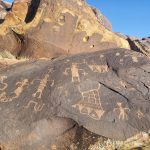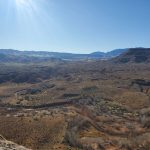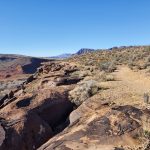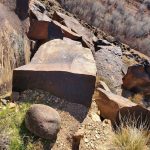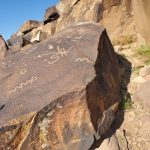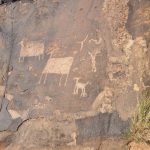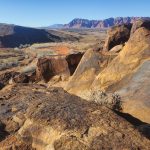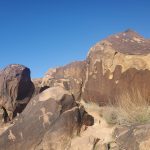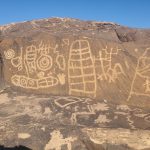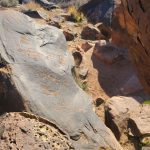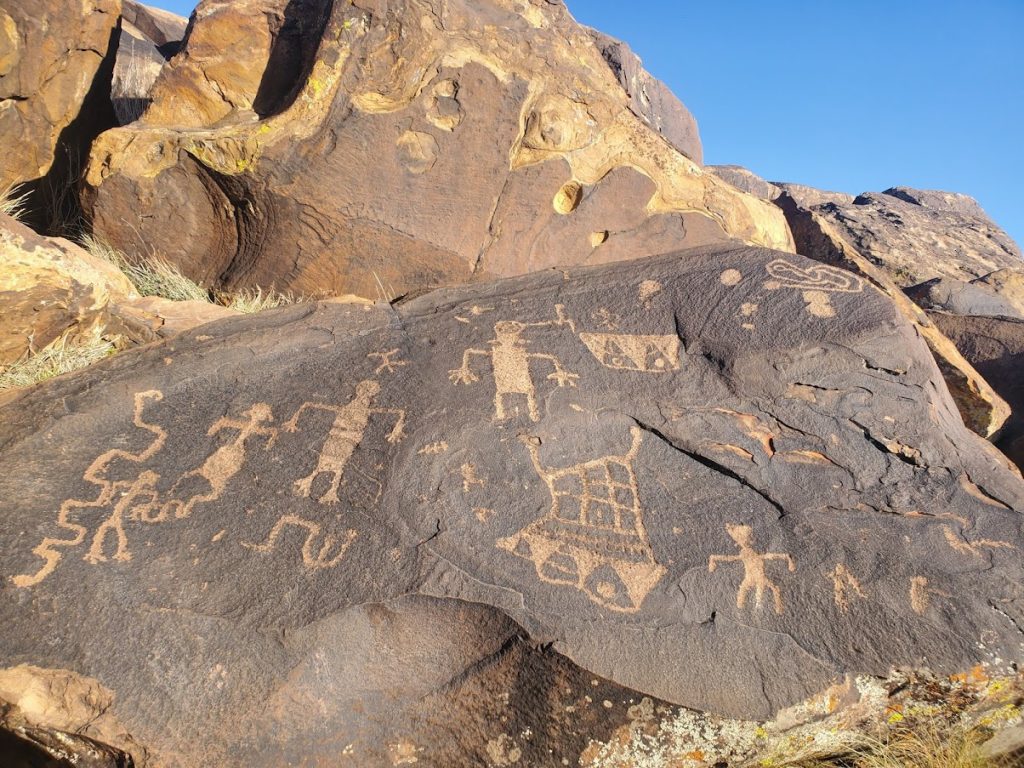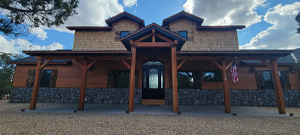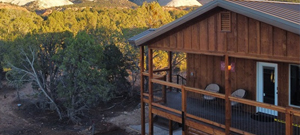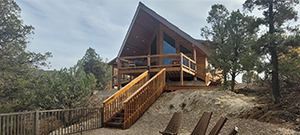The Anasazi Valley Trail or Tempi’po’op Trail is located in Saint George, Utah. It is about 3.5 miles roundtrip and takes one to two hours to complete, depending on how much time is spent studying the rock art. It is home to amazing petroglyphs as well as the ruins of an Anasazi Farmstead. The rock carvings cover the black rocks and are very well preserved. Tempi’po’op means “rock writing” in Southern Paiute. The trail is rated moderate and is open to hikers, horses, bikers, and dogs. Please do not touch the petroglyphs and try to be aware of others enjoying the path.
The trail begins near the east corner of the parking lot at the Santa Clara River Preserve. A few switchbacks lead up the hill about three quarters of a mile to a fork in the trail, the right side being the path to the ruins. The trail continues half a mile from the Farmstead ruins to the ridge and petroglyph site. The bench below the ridge is home to more petroglyphs. There is a bit of scrambling involved and the lower trail is less traveled, but it is worth the extra steps. Several spots will lead back up to the main trail on top of the ridge.
There are countless petroglyphs covering the rocks, making it important to take the time and look carefully. Some are located on top of the rock while others are carved into the sides. Taking advantage of the multiple paths allows for the best views of the rock art. The contrast of the white carvings into the dark rock combined with excellent preservation means the glyphs are easier to make out and notice small details.
Our Vacation Rentals:
Save Up to 15% When You Book Directly
Some images are recognizable, ranging from big horned sheep to swirls to footprints to human figures. Others are more abstract, appearing to be alien men with antennas, large ovals with checkerboards inside and faces on them, and various assorted shapes bunched together. The glyphs cover an area known as Land Hill, utilized by both Ancestral Puebloans and Southern Paiute. It is interesting to see the similarities and differences in rock art from different times and different tribes.
Saint George often climbs into the triple digits in the summer, making spring or fall the best time to attempt this hike. On hotter days, early morning or evening is best as there is no shade along the trail. Plenty of water and sunscreen are necessities. The hardest part of the hike is the incline and climb to the top, which is much more enjoyable in the cooler weather. The trailhead is easily accessible by any passenger vehicle. There are few other places where hikers can see so much rock art in one place. Look carefully as it is common to uncover different petroglyphs each time one goes.
Written by Lauren Kehoe

